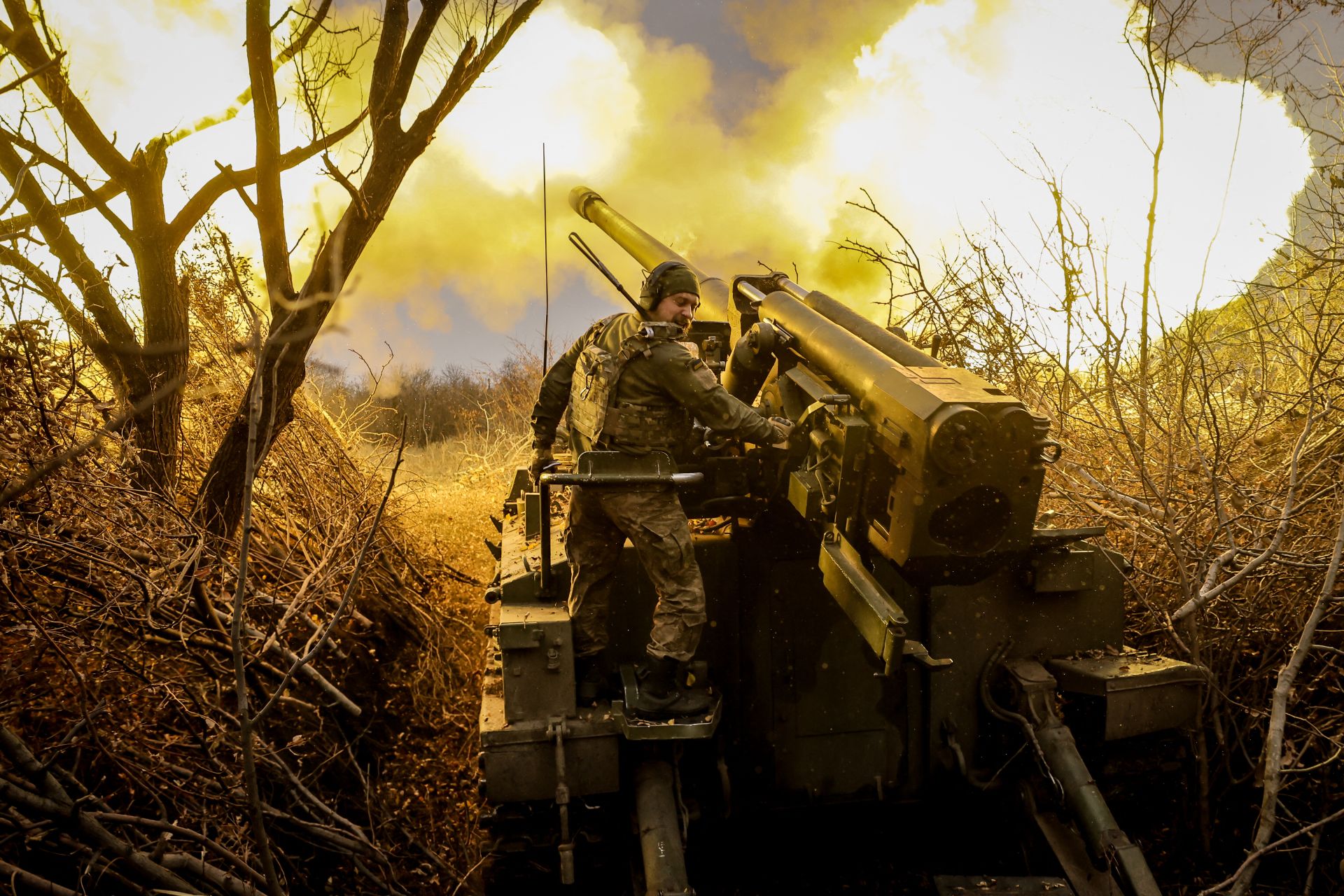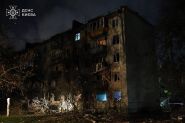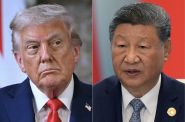- Home
- Middle East
- How Hybrid Warfare has Turned Ukraine into a War on Many Fronts

A Ukrainian serviceman of the 24th Mechanized Brigade fires a 2s5 152 mm self-propelled howitzer towards Russian positions at an undisclosed location near Chasiv Yar in Donetsk region on November 18, 2024 © 24th Mechanized Brigade of Ukrainian Armed Forces / AFP
The war in Ukraine is in large part a battle of bullets, blood and trenches, yet it has also catalyzed new dimensions of ‘hybrid warfare’ beyond the conventional boundaries of conflict.
In the days following Ukraine’s 2014 Revolution of Dignity, when incendiary protests in Kyiv’s Maidan Square led to the overthrow of pro-Russian president Viktor Yanukovych, the world watched as mysterious “little green men,” clothed in Russian military uniforms but without insignia, appeared across Crimea, seizing control of the Black Sea peninsula without a single shot being fired. A disputed referendum later that year resulted in the unilateral annexation of the region by Russia—all without a formal declaration of war by either party.
Since then, many murky—but unclaimed—actions have been attributed to the regime of Vladimir Putin. The use of nerve agents in attempts to assassinate Russian defectors in the UK, meddling in elections, and the rise of bot farms (software agents to generate fake traffic) spreading misinformation all constitute what Russian strategists call “non-linear warfare.”
NATO, on the other hand, refers to these actions as part of Russia’s “hybrid warfare” strategy. According to NATO, this strategy entails the combined use of “military and non-military as well as covert and overt means, including disinformation, cyberattacks, economic pressure, deployment of irregular armed groups, and use of regular forces, to blur the lines between war and peace and attempt to sow doubt in the minds of target populations.”
Ukraine 2022
End of February, 2022, Vladimir Putin launched a unilateral—and what was quickly revealed to be a fairly inept—invasion of Ukraine. From the outset, Russia deployed a set of “active measures,” including espionage, cyberattacks, and internet-based disinformation, designed to undermine Ukraine’s civil defense and prepare the population for a Russian takeover.
However, unlike in the chaotic days following the takeover of Crimea in 2014, Russia’s hybrid warfare operations at the start of the Ukraine war are largely considered to have failed. Disinformation campaigns were countered by a massive grassroots surge of anger toward Russia and support for the government of Ukrainian President Volodymyr Zelensky—a sentiment only compounded by numerous high-profile war atrocities committed by Russian forces across Ukraine.
Russia also infiltrated Ukraine with saboteurs, special operations agents, and spies in the lead-up to the invasion. However, Ukraine’s internal intelligence service, the SBU, with assistance from Western intelligence agencies, was surprisingly effective at hunting down Russian agents during the war’s opening days.
An Economic War
Both sides recognize that the economic front is as pivotal as the military one, shaping the trajectory of the war beyond the battlefield.
When the war began, Russia escalated actions targeting Ukraine’s economic infrastructure. Kinetic and asymmetric attacks on energy grids, fuel depots, and critical industries aimed to cripple Ukraine’s economy. These attacks were paired with efforts to destabilize global food markets; Russia’s blockade of Ukrainian Black Sea ports halted grain exports, a vital lifeline for Ukraine's economy and a key food source for many developing nations.
Russia also sought to increase pressure on the West by severing vital energy supplies to the European continent, fomenting a severe energy shortage that compounded the inflationary spirals and cost of living crises affecting the countries’ post-Covid recoveries.
For its part, Ukraine fought back by leveraging Western sanctions to isolate Russia financially. Sanctions targeting Russian oil, gas, and banking systems severely strained the Kremlin’s war machine, though Moscow has sought to adapt by pivoting trade to allies like China and India.
Co-Opting the Enemy
A key component of hybrid warfare that has played a high-profile role in Ukraine is the utilization of irregular armed forces.
Putin launched his invasion under the pretext of “denazification” and the “protection” of the Russian-speaking minority in Ukraine’s east. As a result, Russia has sought to integrate sympathetic populations into its armed forces through the militias of the Donetsk and Luhansk People’s Republics—two separatist regions officially annexed by Russia in 2022.
This tactic was designed to lend a veneer of popular legitimacy to Russia’s military actions, as well as provide a manpower boost for their faltering military efforts in the early years of the war.
Similarly, Kyiv formed a number of paramilitary units comprised of Russian citizens dedicated to liberating Russia from Putin’s autocratic grip. Among these, the Free Russia Legion and Russian Volunteer Corps played prominent roles in launching cross-border raids into Russia’s Belgorod region in the spring of 2023.
War on the Cyber Front
The scale of death in Ukraine is simply incomprehensible. Western intelligence agencies estimate Russian losses to be as high as 700,000, with similarly staggering figures likely for Ukraine. However, precise casualty numbers remain closely guarded state secrets for both sides.
Yet, alongside the grueling fighting in the trenches of eastern Ukraine, another war is unfolding in cyberspace.
Ukraine’s cyber-security authority, the State Service of Special Communications, says it is fighting a “cyber-war for the first time in history.” The agency claims to be constantly working to defend critical Ukrainian systems, including the internet, electrical grids, and nuclear facilities, from Russian penetration.
According to Microsoft, Russia has used cyberattacks to erase data on Ukrainian systems in conjunction with missile and drone strikes against civilian water, energy, and transportation infrastructure. These coordinated attacks have left millions without power or water at various points throughout the conflict.
To counter such threats, Ukraine’s cyber-security ministry established a volunteer movement called the “IT Army of Ukraine.” This group disrupts Russian operations and launches cyberattacks on Russian targets. The ministry estimates that as many as 400,000 hackers are fighting for Ukraine online.
Utilizing secure Telegram channels, the IT Army organizes denial-of-service attacks on key Russian assets, such as Gazprom and government ministries. The cyber domain is also a key propaganda battleground for Ukraine, with hacktivists spreading pro-Ukrainian sentiments online.
Kyiv has further bolstered its narrative by creating sympathetic new media outlets, such as UNITED24, a pro-Kyiv fundraising platform that has evolved into a media outlet with 1.5 million followers.
Read more




Comments